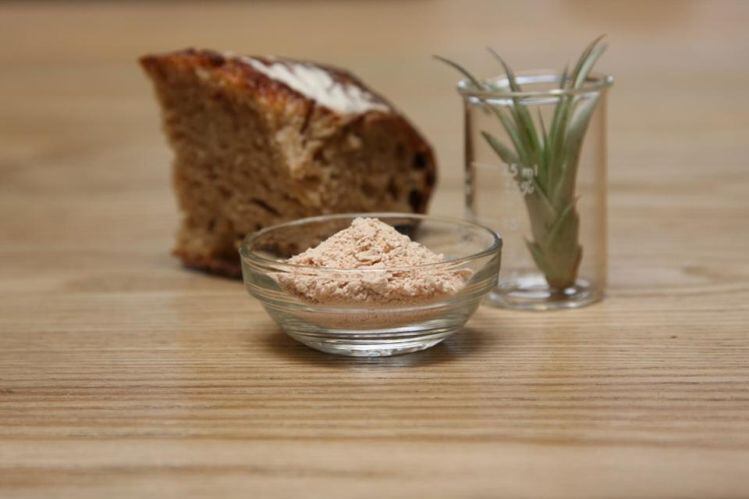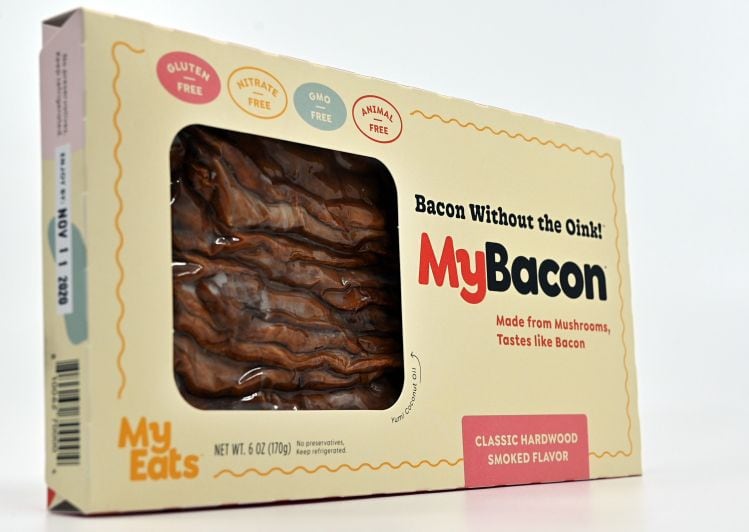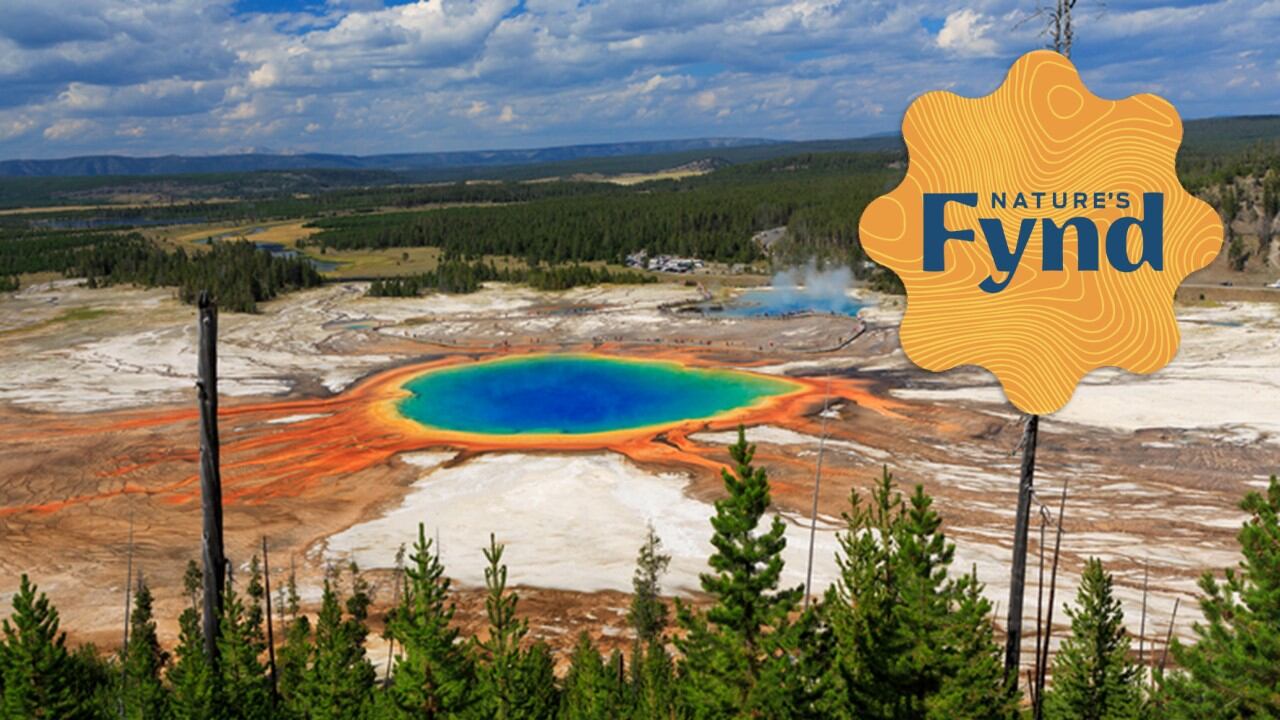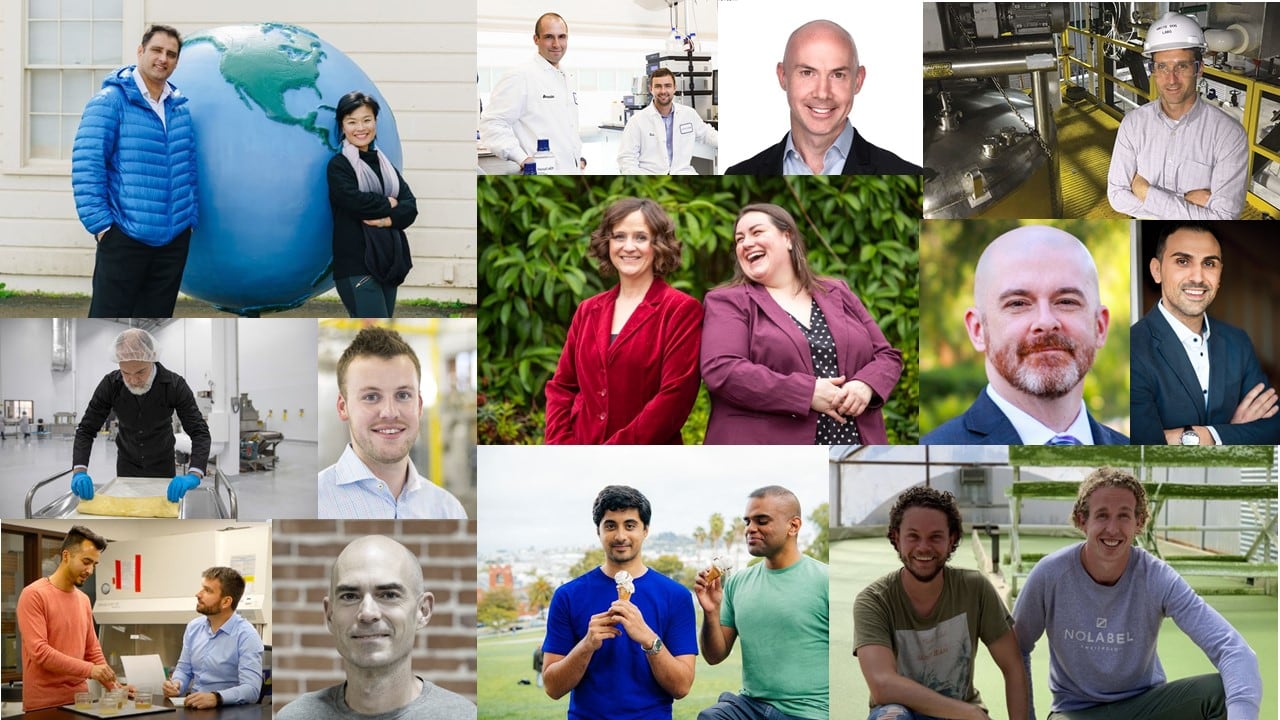The round, led by ADM Ventures, Barclays and GV (formerly Google Ventures), will help fund an innovation R&D lab, accelerate product development and commercialization, and build the team at California-based Air Protein, which effectively makes protein from thin air by deploying a microbe first studied by NASA in the 1960s to convert carbon dioxide and other components exhaled by astronauts into protein.
It’s early days, but meat alternatives (the protein would go through an extrusion process) are one of the most promising application areas, said CEO Dr Lisa Dyson, noting that air protein “would be a primary protein vs a supporting one" in such products.
Asked about the commercialization timetable, “We haven’t yet stated when we expect to [launch a] product at retail,” she told FoodNavigator-USA. “Our path to doing so will involve the launch of our innovation lab, continued product development, and scaling up our technology for large-scale production.”
Meat made to order: 'Our product can be produced in hours or days vs. months or years'
As for consumer messaging (how do you talk to shoppers about air protein, which isn’t animal, plant or fungi-based?), she said: “Our marketing platform is still in development; however, we anticipate that a key part of our messaging will focus on the products’ superior protein levels and unparalleled benefits to the planet.”
Manufacturing will remain in-house, she said: “Regarding branding or partnerships, what we can tell you is that we have been fielding tremendous interest in the industry and are currently assessing all possible options. Interest from the industry has been tremendous and we are currently assessing the potential meat applications.”
When you place air proteins within the broader ‘alternative protein’ space, she said, “There are multiple reasons why our protein is more attractive than other options, availability being one of the most prominent. Air Protein availability will not depend on uncontrollable factors like the weather, or supply chain issues, and our product can be produced in hours or days vs. months or years.”
From a consumer perspective, meanwhile, “Air Protein is the most sustainable option and better for the planet. The non-GMO factor is appealing, in addition to the environmental benefits.”
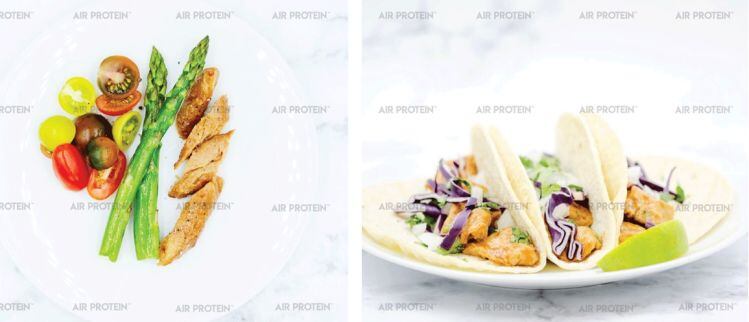
Space food: Hydrogenotrophs were first studied by NASA in the 1960s
Air Protein deploys single-cell organisms called hydrogenotrophs first studied by NASA in the 1960s, which can convert core elements from the air into complete protein, producing large quantities of biomass “in the dark, in any season, in any geography,” said Dr Dyson, who said the key inputs are beverage-grade CO2 (the same type used in sparkling water), water, minerals, and electricity.
The process takes place in fermentation vessels, says the company: "The medium of growth for Air Protein flour is water and does not require any arable land and can scale vertically... The hydrogenotrophs are able to consume the CO2 and other elements to produce amino acids. While crops require months to go from seed to harvest, Air Protein’s probiotic production process is ready for harvest in hours.”
A spinoff of Kiverdi, which is using microbes to produce a variety of products from oils to fish food, Air Protein’s 'flour' has an ~80% protein content and all the essential amino acids along with minerals and vitamins including B12 (which many vegans struggle to get through their diet).
Synthetic biology is not used to engineer the organism, stressed Dr Dyson, who has a PhD in physics from MIT, and started researching hydrogenotrophs in 2011 with Kiverdi co-founder Dr John Reed.
Efficiency
She would not comment on potential pricing for air protein at this stage, but noted the efficiencies and sustainability benefits of a product that can use a recycled greenhouse gas as its core input, producing large quantities of protein ‘to order’ in a matter of hours, without using vast tracts of land to grow crops or feed animals.
She also noted that many other fermentation processes require sugar (which requires land to produce) as feedstock, whereas Air Protein is literally making food out of thin air.
The inspiration behind Kiverdi (which is licensing its technology around protein production for human food applications to Air Protein) came from NASA projects dating back to the 1960s exploring how single-cell organisms called hydrogenotrophs could convert waste carbon dioxide exhaled by astronauts into food, producing an endless cycle of nutrients.
Food applications: Meat alternatives, protein-enriched pastas, sports nutrition products
The ‘light-colored and flavored’ protein rich ingredient can be used in a variety of products from meat-alternatives to protein-enriched pastas and cereals, nutrition bars, sports nutrition products and protein shakes.
“Our protein ingredient is in the form of a flour and has a texture similar to a wheat or soy flour. It has a light color and does not have a strong odor.”
Regulatory pathway: GRAS determination
Asked about the regulatory pathway to market, given that the protein has not previously been in the human food supply, she said the company was working on a GRAS (Generally Recognized as Safe) determination, adding: “We actually have several ingredients that we work with, including whole ingredients and extracts.”
Labeling: 'It would be more accurate to label it as culture-based'
As for how the protein might be listed on a food label, she said that nothing had been finalized yet, while the consumer messaging is also a work in progress, she added: “Air Protein meat is different from plant-based or fungi-based; it would be more accurate to label it as culture-based.”
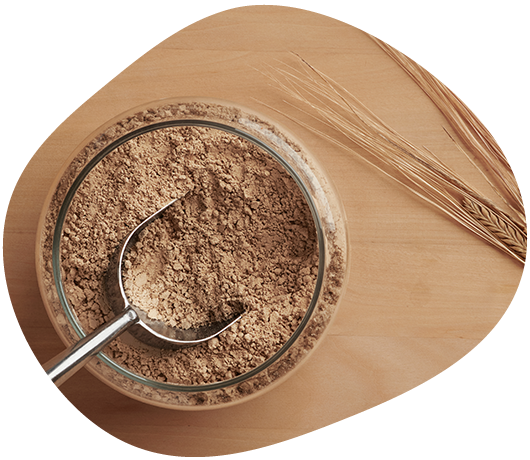
“Air Protein leverages carbon transformation technology developed by Kiverdi, which was inspired by NASA's closed loop carbon cycle concepts for long-journey space missions. Their novel approach to creating air-based meat made Air Protein a perfect fit for ADM Ventures given our work with startups that are focused on improving human health, nutrition and sustainability.” Darren Streiler, managing director venture capital, ADM
“Air Protein is a compelling solution to the growing challenges of sustainably feeding the world’s population while tackling climate change and biodiversity loss. This provides an exciting investment opportunity for us to help Air Protein advance its ambitious strategy.” Andrew Challis, co-head of principal investments, Barclays
“At GV, we’re drawn to invest in the future of sustainable food, and Air Protein provides a unique protein source with proven yields and production efficiency. Air Protein holds considerable potential as a modern meat alternative, and we’re looking forward to seeing what CEO Lisa Dyson and the founding team create in the company’s next phase of growth.” Andy Wheeler, general partner, GV

